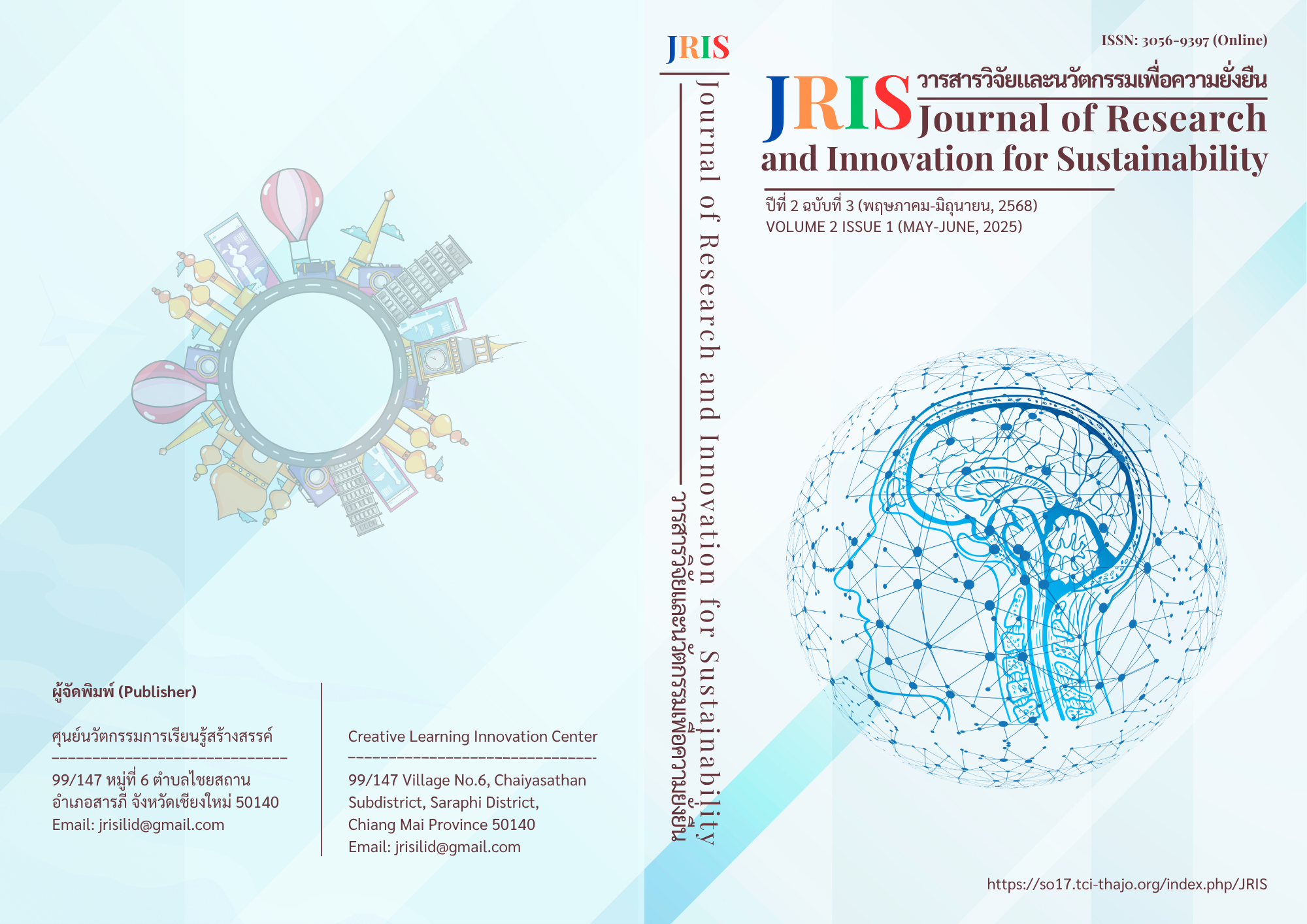THAILAND'S AGRIBUSINESS BRANDING STRATEGIES IN THE DIGITAL ERA: A SYSTEMATIC REVIEW OF THE LITERATURE FOR SUSTAINABLE PRACTICES
Main Article Content
บทคัดย่อ
This study systematically reviews literature on branding strategies for Thailand's agribusinesses in the digital era, focusing on the integration of digital technologies, such as social media, blockchain, and AI, storytelling, and sustainability concepts. The objective is to develop branding approaches that meet the evolving demands of consumers and enhance competitiveness in the global market. Using data from Scopus (2014–2024), the review synthesizes key trends and best practices by analyzing 1,959 articles on branding strategies, 57 articles on agribusiness, 4 articles on the digital era, and 3 articles on Thailand. The findings highlight three critical strategies: leveraging digital technologies to enhance transparency, designing sustainability-focused branding approaches, and creating brand experiences through storytelling. While opportunities abound, significant challenges remain, including the lack of digital literacy among agribusiness operators and increasing global competition. This study proposes practical frameworks and recommendations to support Thai agribusinesses in building sustainable and competitive brands in the digital era.
Article Details

อนุญาตภายใต้เงื่อนไข Creative Commons Attribution-NonCommercial-NoDerivatives 4.0 International License.
การอนุญาตลิขสิทธิ์
การอนุญาตให้ใช้ข้อความ เนื้อหา รูปภาพ หรือสิ่งอื่นใดของสิ่งพิมพ์ ผู้ใช้รายใดมีความต้องการที่จะอ่าน ดาวน์โหลด คัดลอก แจกจ่าย พิมพ์ ค้นหา หรือเชื่อมโยงไปยังข้อความทั้งหมดของบทความ รวบรวมข้อมูลสำหรับการจัดทำดัชนี ส่งต่อเป็นข้อมูลไปยังซอฟต์แวร์ หรือใช้เพื่อวัตถุประสงค์ทางกฎหมายอื่นใดเป็นสิ่งที่สามารถกระทำได้ แต่ห้ามนำไปใช้ในเชิงพาณิชย์หรือมีเจตนาเอื้อประโยชน์ทางธุรกิจ บทความทุกฉบับที่ถูกเผยแพร่ในวารสารวิจัยและนวัตกรรมเพื่อความยั่งยืนจะเผยแพร่ภายใต้สัญญาอนุญาตครีเอทีฟคอมมอนส์แบบแสดงที่มา-ไม่ใช้เพื่อการค้า (Creative Commons Attribution-NonCommercial-NoDerivatives 4.0 International License: https://creativecommons.org/licenses/by-nc-nd/4.0/)
เอกสารอ้างอิง
Blair, D., Rigby, R., & Lee, L. (2024). Creating emotional resonance in advertising language strategies and consumer identity. Journal of Linguistics and Communication Studies, 3(3), 1–13. https://doi.org/10.56397/jlcs.2024.09.01
Eco Green Lite. (2024). Agricultural and agribusiness export data for 2023: Key agricultural products generating revenue include fruits, rice, chicken, cassava, and rubber, relying heavily on the Chinese market at 42%. https://ecogreenlite.com/2024/02/23/featured/general-45/
Hasan, S. (2020, July 13). Bangladesh society, economy, and governance: Adjusting to the post-COVID-19 world. SSRN. https://doi.org/10.2139/ssrn.3651283
Manoharan, J. (2024). Navigating the Digital Marketing Field: The Role of AI and Emotional Storytelling in Consumer Engagement. American Journal of Computer Science and Technology, 7(4), 156-169. https://doi.org/10.11648/j.ajcst.20240704.13
João, G. de, Camargo, F. M., Machado, J. F. D., Nantes, F. C. V., & Leonelli, F. C. (2019). Do I know what I eat? The use of QR code in food packaging to provide traceability information. International Journal of Advanced Engineering Research and Science, 6(1). https://doi.org/10.22161/IJAERS.6.1.8
Lekwirun, K., & Padanilchai, A. (2023). Digital agriculture: Advancement and expected impact to crop section of the Thai agriculture. National Research Council of Thailand (NRCT).
Nilesh, K., Mahamuni, A., Taur, S., & Vande, A. V. (2020). A simple novel technique for the management of a dentoalveolar fracture in a pediatric patient using a vacuum-formed splint. Journal of dental research, dental clinics, dental prospects, 14(1), 68–72. https://doi.org/10.34172/joddd.2020.010
Parreno, J. M., Mafe, C. R., & Scribner, L. (Eds.). (2015). Engaging Consumers through Branded Entertainment and Convergent Media. IGI Global. https://doi.org/10.4018/978-1-4666-8342-6
Perera, C. H., Nayak, R., & Nguyen, L. V. T. (2022). Social media marketing and customer-based brand equity for higher educational institutions. Springer.
Samuel, D. (2024). BERTs are generative in-context learners. In Proceedings of the 38th Conference on Neural Information Processing Systems (NeurIPS 2024). https://doi.org/10.48550/arXiv.2404.10939

